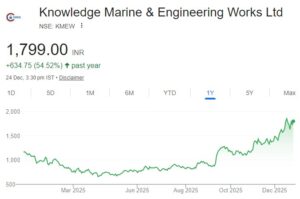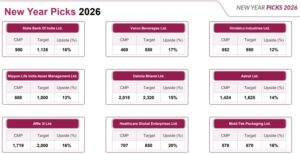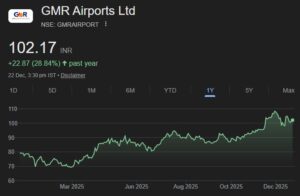
 CRISIL Mutual Fund Ranking is the relative performance ranking of mutual fund schemes within the peer group. The basic eligibility criteria for inclusion in the ranking universe are three-years. NAV history (one-year for Liquid, Ultra Short Term Debt, Index and Debt-Short funds and five – year inclusion for the Consistent Performers), assets under management in excess of category cutoff limits and complete portfolio disclosure. The ranking is done based on the following parameters:
CRISIL Mutual Fund Ranking is the relative performance ranking of mutual fund schemes within the peer group. The basic eligibility criteria for inclusion in the ranking universe are three-years. NAV history (one-year for Liquid, Ultra Short Term Debt, Index and Debt-Short funds and five – year inclusion for the Consistent Performers), assets under management in excess of category cutoff limits and complete portfolio disclosure. The ranking is done based on the following parameters:
Superior Return Score
The Superior Return Score (SRS) is the relative measure of the return and the risk for the schemes compared to their peer group. It is computed for Equity Oriented Categories, Equity Linked Saving Schemes (ELSS), Debt, Balanced, Monthly Income Plan (Aggressive & Conservative) and Gilt categories for a three – year period. The weights for the four nine-month periods starting from the latest are 32.5%. 27.5%, 22.5% and 17.5% respectively. In case of the Consistent Mutual Fund Performers for Equity, Balanced and Debt categories, the SRS is calculated for a period of five years, with separate one year periods weighted differentially with the most recent period having the highest weightage.
Mean Return and Volatility
Mean Return and Volatility are considered separately in case of Liquid, Ultra Short Term Debt and Debt-Short term schemes for a one – year period. Mean return is average of daily return on fund NAV for the latest one-year period and the Volatility is the standard deviation of these returns. The weightages for the four quarterly periods starting from the latest are 32.5%. 27.5%, 22.5% and 17.5% respectively. In case of the Consistent Mutual Fund Performers for the Liquid
category, Mean Return and Volatility are calculated for a period of five years, with separate one year periods weighted differentially with the most recent period having the highest weightage.
Portfolio Concentration Analysis
Concentration measures the risk arising out of improper diversification. Diversity Score is used as the parameter to measure Industry concentration and Company concentration for equity securities. In case of Debt papers, the industry concentration is analyzed only for any / over exposure in sensitive sectors which is arrived at based on CRISIL’s assessment of the prospects for various sectors and Company concentration will have an individual issuer specific limit of 10.0%
Liquidity Analysis
It measures the ease with which the portfolio can be liquidated. In case of Equities, liquidity is calculated by taking the average of last 3 months impact cost published by stock exchanges. Gilt liquidity is measured by analysing the market turnover, days traded and size of trade in any security for a three months period for that security. Corporate Debt Liquidity is computed by classifying each security into 3 categories – Liquid, Semi Liquid and Illiquid and then evaluating a fund’s exposure to each such category.
Asset Quality
Asset Quality measures the probability of default by the issuer of a debt security to honour the debt obligation in time. CRISIL penalizes lower rated securities to a higher level in its analysis.
Modified Maturity /Average Maturity
Modified duration /Average Maturity are considered across all debt categories except liquid to capture the interest rate risk of the portfolio. Lower the value better it is.
Downside Risk Probability (DRP)
DRP measures the probability of the investment getting lower returns than short tenor risk free securities. It measured by assessing the number of times a fund’s return falls below the risk free return over the period of analysis. The risk free return is taken as the 91-day T-Bill yield over the period.
Asset Size
It is considered only for Ultra Short Term Debt and Liquid categories to take into account the effect of large fund flows on the funds performance and ability of the funds to manage such flows optimally. Higher the asset size better it is.
Tracking Error
This is used only for Index funds. The tracking error is an estimation of the variability in a fund’s performance vis-à-vis the index that it tracks. Lower the tracking error better it is.
Historic CRISIL Mutual Fund Performance
Historic CRISIL Mutual Fund performance is considered only for the Consistent category. Quarterly mutual fund ranks during the five year period of analysis are weighted with separate one year periods weighted differentially with the most recent period having the highest weightage.
CRISIL Mutual Fund Ranking Category Definitions
Category Interpretation
CRISIL Fund Rank 1 Very Good performance in the category (Top 10 percentile of universe)*
CRISIL Fund Rank 2 Good performance in the category
CRISIL Fund Rank 3 Average performance in the category
CRISIL Fund Rank 4 Below average performance in the category
CRISIL Fund Rank 5 Relatively weak performance in the category
Detailed methodology available on our website www.crisil.com
* If the top 10 percentile figure is not an integer, the same is rounded off to the next integer. The same approach is adopted for CRISIL Fund Rank 2 (11th to 30th percentile), CRISIL Fund Rank 5 (last 91st to 100th percentile) and CRISIL Fund Rank 4 (71st to 90th percentile) clusters. The residual schemes in the universe are placed in the CRISIL Fund Rank 3 cluster.
Download Research Report
[download id=”292″]





